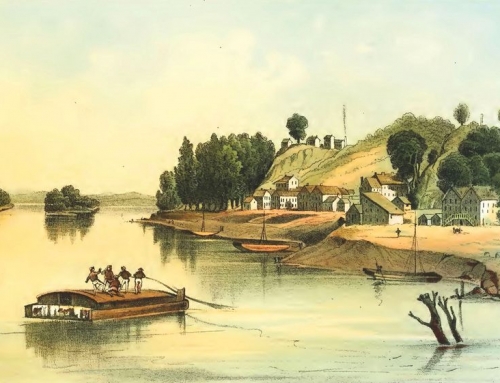Continuing with the religious theme, let’s talk about churches. I am not a religious person (hard to believe after the last two posts, huh?), yet I never get tired of visiting churches. In many small towns, the church is the most impressive structure. In the mid- to late-1800s the Upper Miss Valley was the frontier, the edge of civilization. Building a church was a monumental achievement, an expression of faith by one generation for future generations, brought to life through enormous sacrifices in money, time, and sweat.
On the frontiers of America, many early churches were built of wood. As you might guess, few of those structures remain. More permanent edifices were erected as settlements grew into towns and the population became more permanent. With the explosion of European immigration to the United States in the mid- to late-1800s thousands of skilled artisans fanned out across the United States and used their skills to create magnificent buildings. Churches from that era of outstanding design and beauty can still be found in many of the smallest communities along the river. Here are some of my current favorites.
St. Irenaeus Catholic Church, Clinton, Iowa. I spotted the towers of this church as I was exploring the side streets of the Lyons District of Clinton. I detoured for a closer look. This massive church is built of limestone blocks, many of which were hauled from nearby quarries by its Irish parishioners. The church appeared to be closed. When I got home, I learned that St. Irenaeus had been closed since 2005 and that it is on the chopping block. A few years ago, Clinton’s existing Catholic parishes were consolidated into one and housed in a new building. Four historic churches were closed: St. Patrick’s, St. Mary’s, St. Irenaeus, and St. Boniface. St. Patrick’s was torn down in 2005, with the other three expected to follow soon after. I understand the financial difficulties faced by the Catholic Church. Hey, it’s not easy paying off all those lawsuits caused by pedophile priests. But, let’s get real here. The people who built these churches sacrificed life and limb to get these structures built. They donated money that they could ill-afford to donate, and labored to build the churches with their own hands after long days of working at their real jobs. Tearing down these churches now because of current financial pressures is profoundly disrespectful of the sacrifices made by those early parishioners.
UPDATE (2011): The Clinton County Historical Society now owns St. Irenaeus and will not be razing it.
Church of the Holy Comforter Episcopal, Brownsville, Minnesota. The modest Church of the Holy Comforter Episcopal is a rarity – built in 1869, it is one of the few mid-19th century wood frame churches that has survived. It is now being used as the local historical museum.
Wexford Immaculate Conception Churchis a gem – stunning in its beauty. Set in a lush bowl-shaped valley next to placid Wexford Creek, this simple church is surrounded by headstones on three sides and a hill on the fourth. It was built in the mid-1860s for a mostly Irish congregation, many of whom traveled together on the same ship from Ireland to America.
In Davenport, Iowa, I visited three very cool churches. St. Anthony’s Catholic Church (built in 1838 and expanded in 1853) is one of the oldest churches west of the Mississippi. Trinity Episcopal Church dates to 1867 and has an English Gothic interior meant to resemble the hull of a boat. Sacred Heart Cathedral was completed in 1891, also with English Gothic influences.
Cathedral Basilica of St. Louis, St. Louis, Missouri. I would be remiss if I failed to include the Cathedral Basilica of St. Louis (the New Cathedral in localspeak), which opened in 1914. Something of an architectural mutt, the building is mostly Romanesque on the outside and mostly Byzantine on the inside. The gray concrete block exterior is bland and uninspiring, but the interior couldn’t be more different. Every square inch of interior space, 83,000 square feet in total, is covered in mosaics, making this the largest concentration of mosaic art in the world. The mosaics were created and installed by the father and son team of Paul and Arno Heuduck over the course of 75 grueling years.
© Dean Klinkenberg, 2007






